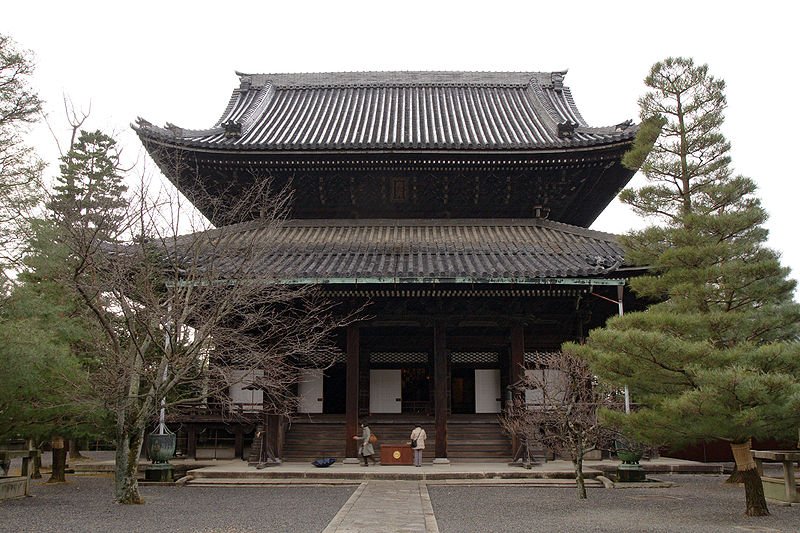Chion-in Temple (GPS: 35.00541, 135.78237) is a temple in the Higashiyama district of Kyoto, Japan. It is the headquarters of the Jodo Shu sect of Buddhism founded by the monk Honen (1133-1212). Within the grounds of the temple are sites where he disseminated his teaching.
Chion-in Temple was originally built in 1234 by Genchi (1183-1238), a disciple of Honen, who established the temple in his master's memory.
The highlight of Chion-in Temple is its colossal gate, called Sanmon. Built in 1619, it is the largest surviving structure of its kind in Japan. The gate was designated a National Treasure of Japan.
 Chion-in Temple, Kyoto
Chion-in Temple, KyotoSource: http://commons.wikimedia.org/wiki/File:Chionin02n4272.jpg
Author: 663highland

Author: 663highland

360° View of Chion-in Temple on Google Maps Street View
Tour buses parked along Jingu-michi, the main road outside Chion-in Temple.One of the entrances to Chion-in Temple.
A peek at the Chion-in Temple complex from its gate.
Also at Chion-in Temple are guesthouses called ohojo and kohojo, built in 1641. They feature irimoya roof style, and are designated as Important Cultural Heritage sites.
The Chion-in Temple is closely associated with the Tokugawa family. Their family creat is found on all the roof beams. Within the temple is the Gongendo mausoleum, which enshrines the spririts of Tokugawa Ieyasu, his son Hidetada, and his grandson Iemitsu.
At Chion-in Temple is a huge bell. It is rung 108 times every year, on New Year's Eve. The ringing is even broadcasted on local television.
Chion-in Temple is  on the Map of Kyoto
on the Map of Kyoto
 Latest updates on Penang Travel Tips
Latest updates on Penang Travel Tips
 Map of Roads in Penang
Map of Roads in Penang
Looking for information on Penang? Use this Map of Roads in Penang to zoom in on information about Penang, brought to you road by road.
Copyright © 2003-2025 Timothy Tye. All Rights Reserved.

 Go Back
Go Back